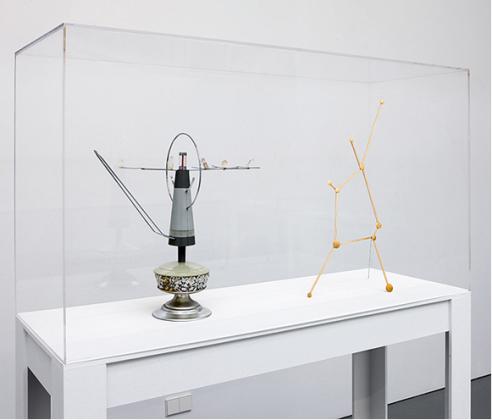
Björn Dahlem, Hintergrundstrahlung, 2011. Photography by Gert Jan van Rooij.
Galerie Fons Welters
Björn Dahlem
"The Unknown"
25 JUNE - 31 JULY
Throughout his working life, Johannes Kepler (1571 – 1630) aimed to describe the order of the infinite universe according to physical rules, as rooted in astronomy, astrology, mathematics, and his religious beliefs. Invoking ancient cosmological traditions, Kepler sought to shape and arrange reality – not just the reality that unfolds before our eyes but also the reality that remains concealed from us – into one integrated whole. His underlying aim was to define the place of human beings in the cosmos, in physical, spiritual and intellectual terms, and to grasp the intangible in an intelligible way. In his quest for world harmony, Kepler can be said to have heralded, almost by chance, the new scientific approach. As it happens, he was forced to concede the impossibility of comprehending cosmic harmony in physical terms. This impossibility, however, marked the beginning of the modern pursuit of science, in which each sphere of human activity – science, art, and religion – has its own reality and rules.
In his recent conceptions, the German artist Björn Dahlem (1973) builds on the heritage of Kepler and his peers but in his own way: Dahlem tries to reunite again all the disciplines that have been separated. In his installations, many of which are composed of complex objects and glass display cases, he creates his own universe, in which he blends aspects of physics, astronomy, astrology, Romantic ideas, mysticism and existential philosophy into an integrated whole. His unique architectural installations are essentially intuitive, quasi-scientific models that are devised with a view to explaining the world.
Dahlem makes his models out of everyday materials: mirrors, glass, pieces of wood, bells, light bulbs, wires, and found objects. His ingenious constructions transform banal objects into relics, with jars of jam and honey ending up resembling mysterious spiritual objects. Vertical structures appear like tiny cathedrals, concentrations of objects turn into galaxies, while conspicuous bells remind us of time, and in this context also of eternity. The large white plinths, the transparent glass panes of the display cases and the numerous light sources bathe the entire installation in a glow of purity and lucidity.
Dahlem challenges the supposed faultlessness of current scientific methods and focuses on an earlier stage of science, when magical practices and experiments in physics were seen as comparable. Science is just narrative, he appears to be saying, and art too is an area in which conceptual models, theories and hypotheses can be presented. Hildegard van Bingen and Joseph Beuys, mediaeval images of human beings and God, and recent research on matter: Dahlem’s quest for cosmic harmony transcends the boundaries between separate discourses. With the aid of technology, science and imagination, Dahlem creates an artistic landscape that explores the entire span of the human mind.
[Marta Gnyp]